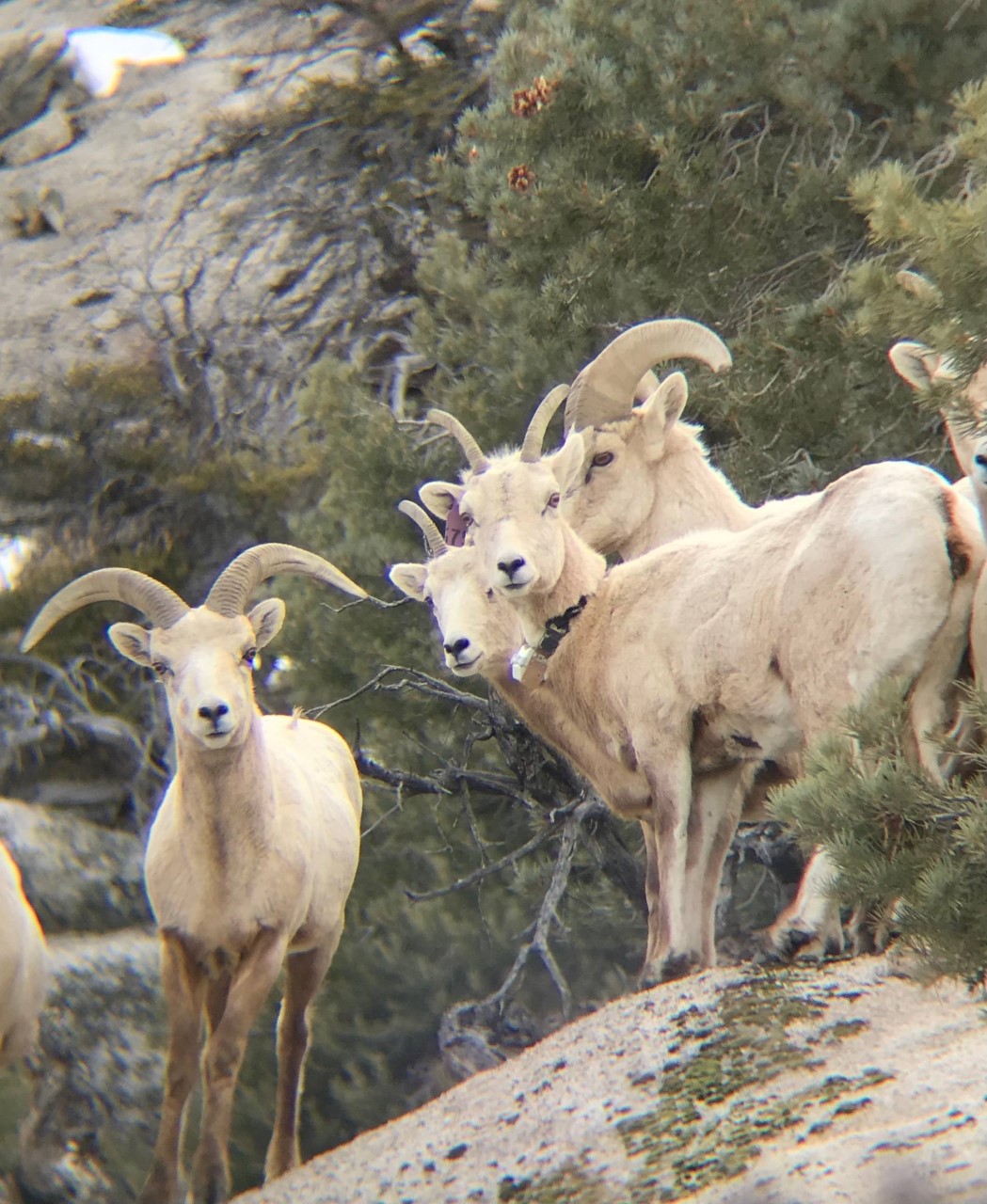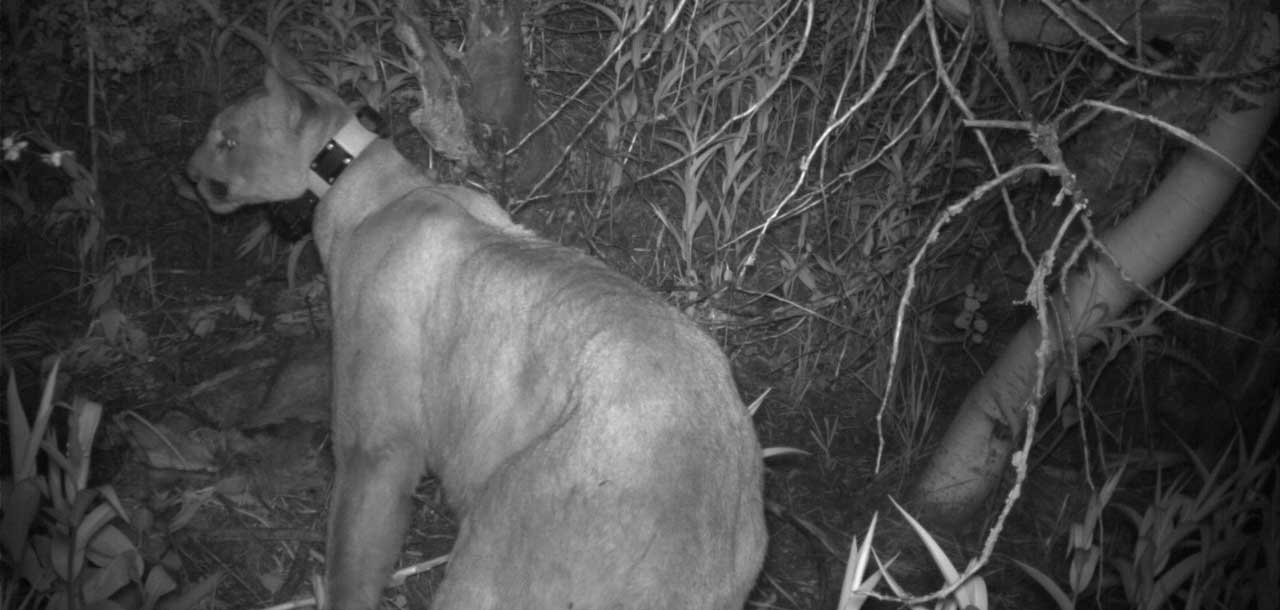Yasaman Shakeri - The consequences of an imbalanced ecosystem and the recovery of the endangered Sierra Nevada bighorn
Yasaman Shakeri
Biodiversity Graduate Student Research Enhancement Grant
Department of Zoology and Physiology
Graduate Advisor: Dr. Kevin Monteith
Objective:
The objective of my dissertation is to quantify the influence of an unregulated predator on an endangered keystone species, the Sierra Nevada bighorn sheep. Our findings will aid in the management and recovery of this keystone species as the long-term implications of predation for this endangered species is currently unknown.
Background and rationale:
A keystone species is a species that has a disproportionate influence on its environment relative to its abundance (Paine, 1969). The endangered Sierra Nevada bighorn sheep (Ovis canadensis sierrae, hereafter Sierra bighorn) is an endemic subspecies of bighorn sheep only found in the Sierra Nevada mountains of California (Grinnell, 1912; Wehausen, 1980). Like many herbivores, bighorn sheep play a role in regulating alpine plant diversity through selective foraging (Mortensen et al., 2018). Further, bighorn sheep serve as a food source for predators and scavengers. Prior to the near extinction of the Sierra bighorn, the population likely provided an important prey and scavenging source for wolverines (Gulo gulo), the extirpated grizzly bear (Ursus arctos), the endangered Sierra Nevada red fox (Vulpes vulpes necator) and multiple bird species (Bleich, 2018; Dalerum et al., 2009; Green et al., 1997; Margalida et al., 2011; Sánchez‐ Zapata et al., 2010; Selas & Vik, 2006). Unfortunately, the role of this species for the ecosystem is dwindling as the population was driven to near extinction by commercial hunting and disease from domestic sheep (Wehausen, 1980). The species was listed as endangered in 2000, and there are currently 600 Sierra bighorn in the wild as of 2020.
The main predator of the Sierra bighorn is the mountain lion (Johnson et al., 2013). This endemic species lived along Sierra bighorn, but the arrival of European settlers resulted in drastic changes to the environment and the biodiversity of the Eastern Sierra ecosystem. These ecological changes have resulted in an imbalance in predator-prey dynamics, resulting in unsustainable predation on Sierra bighorn by mountain lions by two primary mechanisms - first, is the loss of predator diversity. Wolves (Canis lupus) and grizzly bears (Ursus arctos) were extirpated from California in the early 1900s (Storer & Tevis, 1996; Young & Goldman, 1944), leaving the mountain lion (Puma concolor) as the current apex predator. Wolves helped control mountain lion populations (Elbroch et al., 2020; Elbroch & Kusler, 2018); however, the loss of competing predators has allowed mountain lion populations to expand and exploit varied food sources – sources that may have previously been exclusive to wolves. Importantly, without predation pressure from wolves, the mountain lion population is driven by prey availability (Pierce et al., 2012). Thus, the second primary mechanism reducing Sierra bighorn populations is an increase in a closely related, abundant species – mule deer (Odocoileus hemionus) - that facilitates high mountain lion populations. With mule deer sustaining a high density of mountain lions, predation pressure on Sierra bighorn continues to be the main source of mortality for this endangered species (Conner et al., 2018; Gammons et al., 2021) (Figure 1). The eruption of the mule deer population from irrigation and habitat alterations for livestock has allowed for high densities of mule deer, which is the main prey source for mountain lions (Berger & Wehausen, 1991).
A functional response is the relationship between the proportion of prey consumed and the number of prey available, while a predator population altered by prey availability is a numerical response (Solomon, 1949). To understand the complexities of predator prey dynamics involving multiple prey species and an apex predator, I will examine the response of mountain lions on Sierra bighorn populations, and the indirect effect of an abundant mule deer population. In doing so I will elucidate how predators and an abundant, alternate food resource for predators, influence predation, behavior, and population growth for a keystone ungulate species – highlighting how ecosystem imbalance can influence ecosystem diversity and function. Moreover, our results will also provide wildlife managers with valuable information needed to conserve this endangered keystone species.
Share This Page


Research Highlights




